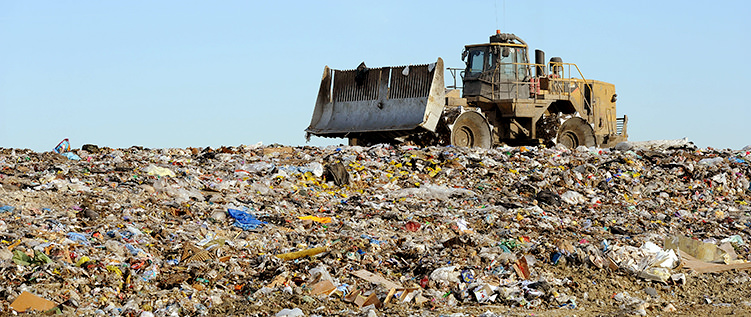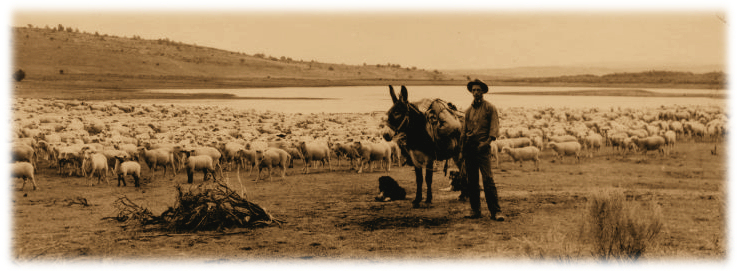Lava Lake Land and Livestock – The Three-Legged Stool – Production — by Todd Macfarlane
Lava Lake Land & Livestock, headquartered near Carey, Idaho, is a unique sheep ranching operation that has had little previous exposure in grass-fed production circles. A combination of factors, including size, scale, duration, and “story,” as well as production and marketing methods, differentiates and distinguishes Lava Lake from virtually all other sheep production operations in the United States.
The Lava Lake operation is owned by the Brian & Kathleen Bean Family, and operated as an entirely grass/forage-based, migratory range sheep outfit, who’s almost 6000 mother ewes spend about half their time on native ranges, covering hundreds of thousands of acres of public land in Idaho, administered by the U.S. Forest Service and Bureau of Land Management.
Unlike virtually any other operators of this scale, Lava Lake direct-markets approximately 40% of its market lambs as its own, Lava Lake branded, all-natural, grass/forage-fed lamb product. Finally, in contrast to most other large sheep operations in the West that have been in business for multiple generations, the Beans have only been in the sheep business for about 10 years.
As Allan Nation has reminded us on so many occasions, every successful business venture is a three-legged stool, consisting of production, finance, and marketing. Using the three-legged stool framework, while finance, marketing and a fourth dimension will be addressed elsewhere, later, this article examines the production leg of the Lava Lake operation.
Production Methods based on Sustainability, Continuity and Innovation
Lava Lake principals are fully committed to sustainable production methods. While they are very interested in innovation, they have always sought to balance their innovative ideas with continuity, relying on valuable lessons from their predecessors, which include six different Central Idaho ranch owners, whose ranches were assembled into the current Lava Lake operation. For that reason, they have sought to maintain good relationships with all the previous ranch operators. They have maintained a particularly close and affectionate relationship with Pete Cenerussa, a well-known Basque sheep rancher now well into his 90’s who served as Idaho’s Secretary of State for many years. It was Beans’ desire, right from the outset, to find a balance between continuing the very best practices and traditions of their predecessors’ production models, blended with their own innovative ideas.
While on one hand some of Lava Lake’s basic production methods may be viewed as innovative, in reality, they are based on thousands of years of sustainable precedent. In many cases, such innovation actually meant a return to production practices of the past that were less dependent on equipment, infrastructure and mechanization, seeking, among other things, to “create a smaller carbon footprint.”
Lava Lake’s basic production methods follow the pattern of nomadic shepherds that have operated around the world since the dawn of time (or at least recorded history) moving with the seasons, and following the natural green forage wherever they can find it. It also means that the operation relies almost entirely on hired shepherds (typically called sheepherders in the West) instead of fences to manage their multiple bands of sheep. Fifty to 100 years ago, those sheepherders would have typically been Basque shepherds from Europe, some of whom, like Pete Cenerussa and his predecessors, would have eventually become Western sheep ranchers themselves.
Today, however, most such hired shepherds come from South America, and primarily from Peru, as evidenced by the fact that all of Lava Lake’s 11 herders and camp tender are Peruvians, who work in the United States on three year agricultural work visas. Although sheep foreman Pedro Loyola is also Peruvian, he has been tending flocks in the Pioneer Mountains for well over 15 years, and is now a U.S. citizen.
Although Lava Lake is headquartered in Idaho and their ewes spend about eight months every year following the green forage from the low lying deserts of the Snake River Plains in and around Craters of the Moon National Monument in the early spring to the high pastures of the Sawtooth National Forest later in the summer, their ewes don’t spend the whole year in Idaho. Lava Lake trucks its pregnant ewes to the sunny, warm climate of Riverside County California, to winter and lamb on large semi-dormant alfalfa and sudan fields near Blythe, in the California desert along the Colorado River.
In addition to the fact that wintering in California is much more pleasant for both their sheep and shepherds than braving much harsher Idaho winters, there are a number of other advantages. Custom winter grazing in California allows Lava Lake to almost completely avoid the use of hay and stored forages. And range lambing in the open fields also allows them to avoid very labor and infrastructure intensive “jug lambing” in sheds. Although calculating carbon footprint is not an exact science, given their environmentally friendly objectives, Lava Lake principals believe their approach does in fact create a smaller carbon footprint than attempting to winter and lamb in Idaho, which would necessitate having a lot more infrastructure, and either having a large scale haying operation, or buying-in outside hay. They are also convinced that in the financial cost/benefit analysis, this approach makes a lot of sense. Moreover, wintering in California allows Lava Lake to almost completely change the schedule of the otherwise applicable annual cycle.
Based on the annual schedule adjustment made possible by wintering and lambing in California, Lava Lake’s annual cycle is based on the following pattern: Starting in mid-November, ewes are trucked from Idaho to California to winter and begin a staggered lambing season which begins in mid-November and lasts through February. Ewes and lambs are then trucked back to Idaho to start grazing on BLM grazing allotments in the lower lying deserts of the Craters of the Moon National Monument starting about the first of April. By then the already 2-4 month-old lambs are plenty robust, vigorous, and ready for the rigors of following the fresh new green forage all the way to the top of the mountains, which approach elevations of 12,000 feet above sea level.
From Spring to Fall, Lava Lake’s sheepherders all live in portable sheep camp wagons with canvas-covered tops that resemble prairie schooners. With a saddle horse and a good border collie herding dog or two, each shepherd’s sole responsibility is to tend bands of 7-900 ewes, with about twice that number of lambs. With the help of large white livestock guard dogs, obviously one of the shepherds’ highest priorities is to protect the sheep from predators. The other high priority is to keep the sheep continually moving to the best possible forage available, allowing the lambs to grow at a phenomenal pace. It is critical that the lamb bands be moved continually to give the fast growing lambs continual access to fresh, high quality forage every day. Given the whole operation’s environmentally-friendly orientation, another reason to move often is to reduce impacting any one spot too much or for too long.
In terms of sheep genetics, Lava Lake runs mostly Columbia and Columbia/Ramboullet cross ewes, bred primarily to Suffolk rams, for a larger, terminal cross market lamb. They do, however, have one band of Panama ewes, as a carryover from one of their predecessors.
To have a staggered lambing season, Lava Lake must also have a staggered breeding season. In keeping with the Basque tradition of putting the rams in just after Summer Solstice on St. John’s Day, as Pete Cenerussa did, Lava Lake begins putting bucks in the earliest lambing bands on June 24th, and they start weaning the biggest lambs from those same earliest lambing bands about the same time. This means they are shipping newly weaned lambs from the end of June through about the first part of September.
Obviously, this is earlier than many sheep operations typically wean, but given the early lambing, and excellent forage, the lambs have plenty of growth. According to Lava Lake Manager Mike Stevens, many of their lambs will weigh as much as 140-150 lbs. at weaning, but most are in the 130 range, with some of the youngest lambs as low as 100 lbs. This weaning schedule makes a lot of sense because according to Stevens, based on normal precipitation patterns in the high country, after July there is very little new forage growth, which rapidly growing lambs require for optimal gains.
When the lambs are pulled off and weaned, some of the ewe bands are consolidated for breeding and herding the rest of the grazing season in Idaho. The consolidated ewe bands are sheared in September, when they start coming off the mountain summer ranges. They move first onto lower-lying BLM allotments and private ground in the foothills, and then eventually move onto private hay and crop fields in the surrounding area to custom graze on crop residue (primarily alfalfa stubble) on the valley floor until it is time to start loading the trucks to ship the earliest bred bands to California, to start lambing in about mid-November. Then the annual cycle repeats itself.
The other legs of the stool, including finance, marketing and an additional fourth dimension, will be addressed in other installments.



